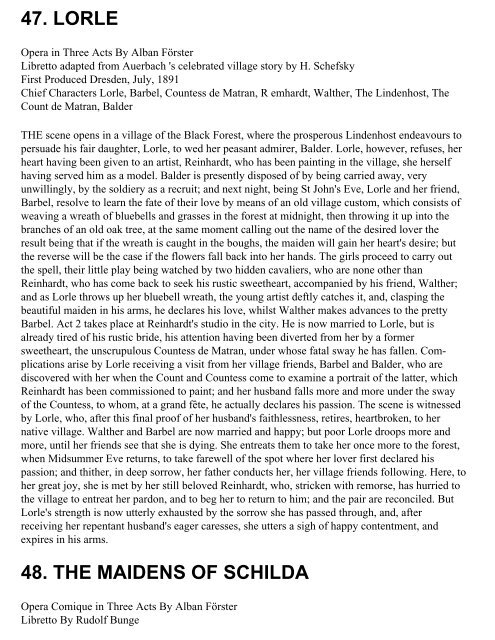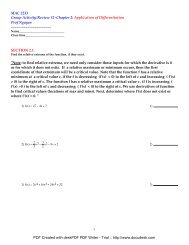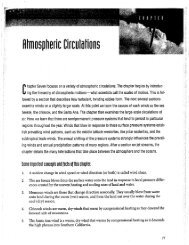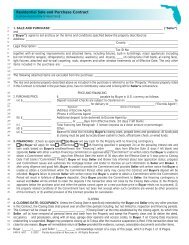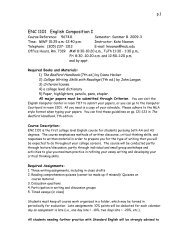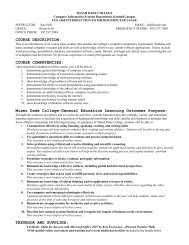Opera Plots I - MDC Faculty Home Pages
Opera Plots I - MDC Faculty Home Pages
Opera Plots I - MDC Faculty Home Pages
You also want an ePaper? Increase the reach of your titles
YUMPU automatically turns print PDFs into web optimized ePapers that Google loves.
47. LORLE<br />
<strong>Opera</strong> in Three Acts By Alban Förster<br />
Libretto adapted from Auerbach 's celebrated village story by H. Schefsky<br />
First Produced Dresden, July, 1891<br />
Chief Characters Lorle, Barbel, Countess de Matran, R emhardt, Walther, The Lindenhost, The<br />
Count de Matran, Balder<br />
THE scene opens in a village of the Black Forest, where the prosperous Lindenhost endeavours to<br />
persuade his fair daughter, Lorle, to wed her peasant admirer, Balder. Lorle, however, refuses, her<br />
heart having been given to an artist, Reinhardt, who has been painting in the village, she herself<br />
having served him as a model. Balder is presently disposed of by being carried away, very<br />
unwillingly, by the soldiery as a recruit; and next night, being St John's Eve, Lorle and her friend,<br />
Barbel, resolve to learn the fate of their love by means of an old village custom, which consists of<br />
weaving a wreath of bluebells and grasses in the forest at midnight, then throwing it up into the<br />
branches of an old oak tree, at the same moment calling out the name of the desired lover the<br />
result being that if the wreath is caught in the boughs, the maiden will gain her heart's desire; but<br />
the reverse will be the case if the flowers fall back into her hands. The girls proceed to carry out<br />
the spell, their little play being watched by two hidden cavaliers, who are none other than<br />
Reinhardt, who has come back to seek his rustic sweetheart, accompanied by his friend, Walther;<br />
and as Lorle throws up her bluebell wreath, the young artist deftly catches it, and, clasping the<br />
beautiful maiden in his arms, he declares his love, whilst Walther makes advances to the pretty<br />
Barbel. Act 2 takes place at Reinhardt's studio in the city. He is now married to Lorle, but is<br />
already tired of his rustic bride, his attention having been diverted from her by a former<br />
sweetheart, the unscrupulous Countess de Matran, under whose fatal sway he has fallen. Complications<br />
arise by Lorle receiving a visit from her village friends, Barbel and Balder, who are<br />
discovered with her when the Count and Countess come to examine a portrait of the latter, which<br />
Reinhardt has been commissioned to paint; and her husband falls more and more under the sway<br />
of the Countess, to whom, at a grand fête, he actually declares his passion. The scene is witnessed<br />
by Lorle, who, after this final proof of her husband's faithlessness, retires, heartbroken, to her<br />
native village. Walther and Barbel are now married and happy; but poor Lorle droops more and<br />
more, until her friends see that she is dying. She entreats them to take her once more to the forest,<br />
when Midsummer Eve returns, to take farewell of the spot where her lover first declared his<br />
passion; and thither, in deep sorrow, her father conducts her, her village friends following. Here, to<br />
her great joy, she is met by her still beloved Reinhardt, who, stricken with remorse, has hurried to<br />
the village to entreat her pardon, and to beg her to return to him; and the pair are reconciled. But<br />
Lorle's strength is now utterly exhausted by the sorrow she has passed through, and, after<br />
receiving her repentant husband's eager caresses, she utters a sigh of happy contentment, and<br />
expires in his arms.<br />
48. THE MAIDENS OF SCHILDA<br />
<strong>Opera</strong> Comique in Three Acts By Alban Förster<br />
Libretto By Rudolf Bunge


